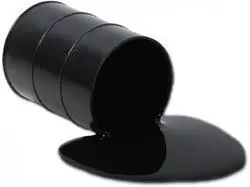Earlier this week, news of a fall in oil price below $0 per barrel made wave across the world. However, against the wide misconception on its meaning and implications particularly to the distressed Nigerian economy is the truth that the slump in the US crude oil futures below $0 per barrel does not reflect the reality in the global oil market but is a mere drop in US crude oil price by the New York Mercantile Exchange (NYMEX).
Explained by a senior oil and gas expert, the purported end of oil in Nigeria only reflects a negative futures price of oil which is a product of the demand and supply of oil, as well as the associated cost of storing oil. Simplified, NYMEX has a facility that stores oil and it keeps an inventory on it stored oil. As with basic economics, high inventory means low demand and subsequently low price. Expectedly, the simultaneous lockdown of economies across the world has reduced demand for oil, resulted in overproduction, and created a price problem.
The price irregularity was also induced by other factors, such as the oil trade war. However, contrary to the supposed end of oil misconception in Nigeria is the glaring reality that the world is only experiencing price irregularities orchestrated by market imbalances, a bit of which is connected to the COVID 19 pandemic. In fact, Brent crude currently sells at $20.86 per barrel, far above the supposed $0 per barrel figure, although far below Nigeria’s 2020 budget benchmark price.
Unfortunately, the evident truth is that the realities are not close to positive for Nigeria. With the country’s near-absolute dependence on oil revenues, price inconsistencies and drops distort the budget process. In fact, due to the persistent assaults from oil price crashes since the start of the year, the government has contemplated downsizing the 2020 budget by ₦1.5 trillion.
Further, while a benchmark of $57 per barrel was adopted in the original Appropriation Bill, market realities made the government readjust the benchmark to $30 per barrel. Even with that, the current reality may require further cuts on the budget as the current oil price is almost $10 away from the readjusted benchmark and the price is yet unstable.
Besides, even if the world immediately defeats COVID 19, and economies are restarted, and in fact, a ceasefire is announced on the oil trade wars, an immediate return to the 2020 budget benchmark price may be impossible! The simplest explanation for this, perhaps, is that the pricing will take some time to re-adjust due to the current oversupply that has been met with minimal demand.
By implication, the realities may completely paralyze the already lame Nigerian economy with high risks of a possible recession as well as untold economic hardship. Although the drop in US crude oil futures is not the end of Nigeria’s oil trade per se, it is a valid standpoint for predictions and projections – which objectively may mean the beginning of the end.
However, like the mythical Pandora’s box, amidst negative situation are often few glimmers of hope and elements of positivity. Perhaps the current global oil outlook will provide Nigeria with the opportunity for a reflection on some of its economic realities. For instance, within the space of a month, the pump price for PMS has been readjusted twice beckoning to the series of questions on the oil management framework. If lower prices can be introduced during a crisis, then there are questions about the oil revenue framework in the country. This particularly ties to the years of advocacy for improved oil governance in the country.
Positively, the crises also presented the government the opportunity to review its oil subsidy policy. Even as the country has reportedly transited to a deregulated oil regime. That appears to be a step in the right direction considering oil subsidy sapped about ₦10tn between 2006 and 2018. In 2019, while Nigeria operated with a deficit of ₦1.92tn, about 10 percent (₦1tn) of its budget was spent on PMS subsidy! Thus, the subsidy removal will significantly reduce Nigeria’s unnecessary spending putting its fiscals in a better front. Beyond this, however, is the need to revisit the oil revenue management framework. Possibly, it is time for the country to explore the option of savings in the situation of marginal profits in oil trade.
The most persistent lesson with the oil price fluctuations, perhaps, is the need for economic diversification and economic repositioning. The realities should ordinarily compel the government to consider expanding its revenue generation to sectors with enormous revenue potentials. Next to this is the need for accountability not just in oil revenue management but in the overall national financial structure.


